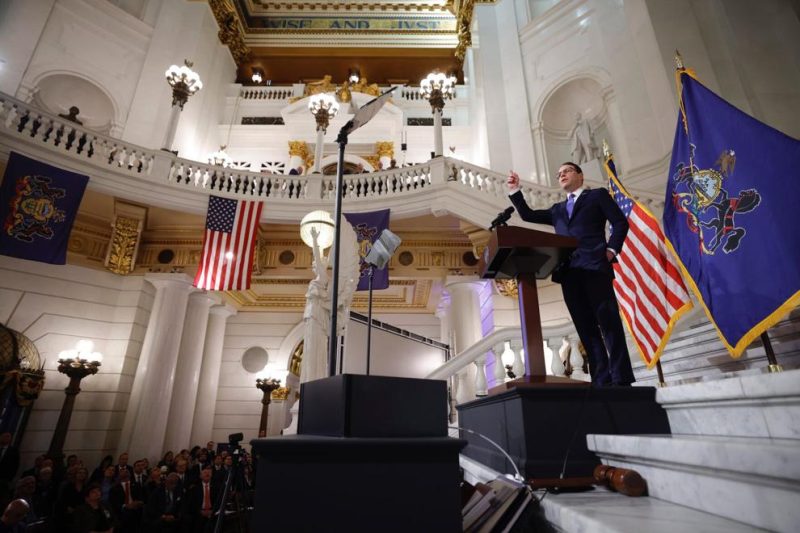By Christen Smith | The Center Square
(The Center Square) – Pennsylvania Gov. Josh Shapiro relied on an uncontested court ruling to support his $1.1 billion opening bid for public school spending during his budget address Tuesday.
Last year, the Commonwealth Court deemed the state’s basic education funding formula unconstitutional. All sides agree schools need help, but where, how and why remain points of contention.
“Our challenges around education aren’t going to be solved in one budget cycle, but we can make real progress toward a lasting, equitable solution,” Shapiro said. “We have a once-in-a-lifetime opportunity to do right by our kids. Let’s seize this moment.”
For Shapiro and his Democratic allies, the state’s decades of chronic underfunding have crystallized inequality across districts, where some buildings crumble, teachers flee and students struggle.
A recent report from the Commonwealth Foundation demonstrates as much, with marginal improvement among students in math proficiency between 2022 and 2023. However, more than half of fourth graders and nearly three-quarters of eighth graders still score below grade level.
Likewise, reading scores slumped over the last year and still trail 2019, according to the report. Fourth grade proficiency dropped 0.4 percentage points, while eighth grade declined 2.9 percentage points.
The foundation said the state’s list of “low achieving schools” – those that test in the bottom 15% – average proficiency rates of 11.4% for math and 24.5% for reading.
The data echoes a June analysis from The Nation’s Report Card that shows average reading and math test scores for 13-year-olds fell 4% and 9%, respectively, compared to prepandemic levels.
That’s why Shapiro wants to spend $1.1 billion on public schools this coming year, including funneling $900 million through a formula that considers economic need. Another $300 million will support building upgrades to cure mold, lead and other long-simmering structural problems.
He’s also proposed more money, albeit at typical levels, for $50 million in special education support and another $30 million for preschools.
Senate Republicans, who lead the chamber, scoffed at the governor’s $48.3 billion spending plan that they say offers no explanation for where the money comes from beyond the state’s $6.1 billion emergency savings account, called the Rainy Day Fund.
Senate President Pro Tempore Kim Ward, R-Greensburg, called it “a budget of unicorns and rainbows.”
“Just a little bit for everybody in this budget without telling us how you’re going to pay for it,” she said.
“We will dig into this budget,” Ward added. “We will look at it hard. We will try to find out where he’s coming up for the money to pay for this, instead of just raiding the Rainy Day Fund.”
Shapiro said clinging to reserves leaves taxpayers footing the bill. Investing now, he said, will grow the economy and the financial base to support future spending, leaving $11 billion in reserves for the coming years.
“I don’t want to take any more from the people of Pennsylvania than we need to,” he said. “Instead, I want to invest in them.”
It’s a sentiment House Democratic leadership backed up in a joint statement issued Tuesday.
“To be clear, House Democrats insist that we fulfill our constitutional and moral obligation to fund our public schools,” the leaders said. “That we do more to invest in our colleges and universities; that we make smart investments to attract and retain businesses while protecting our workforce; and that we continue cutting costs for middle-class families.”
Republicans argued the math just doesn’t add up without tax increases in future years. Leadership pointed to data from the Independent Fiscal Office that projects a multi-billion budget deficit by the end of Shapiro’s first term.
They also believe meeting the legislature’s constitutional mandates means offering students more options than just an assigned school with abysmal academic performance scores.
The divide over a $100 million school voucher program, which would give scholarships to students in low-performing districts to attend private schools instead, still exists. Shapiro, in his address, still straddles the gap – expressing support for the idea while still siding with his Democratic colleagues and their staunch opposition.
